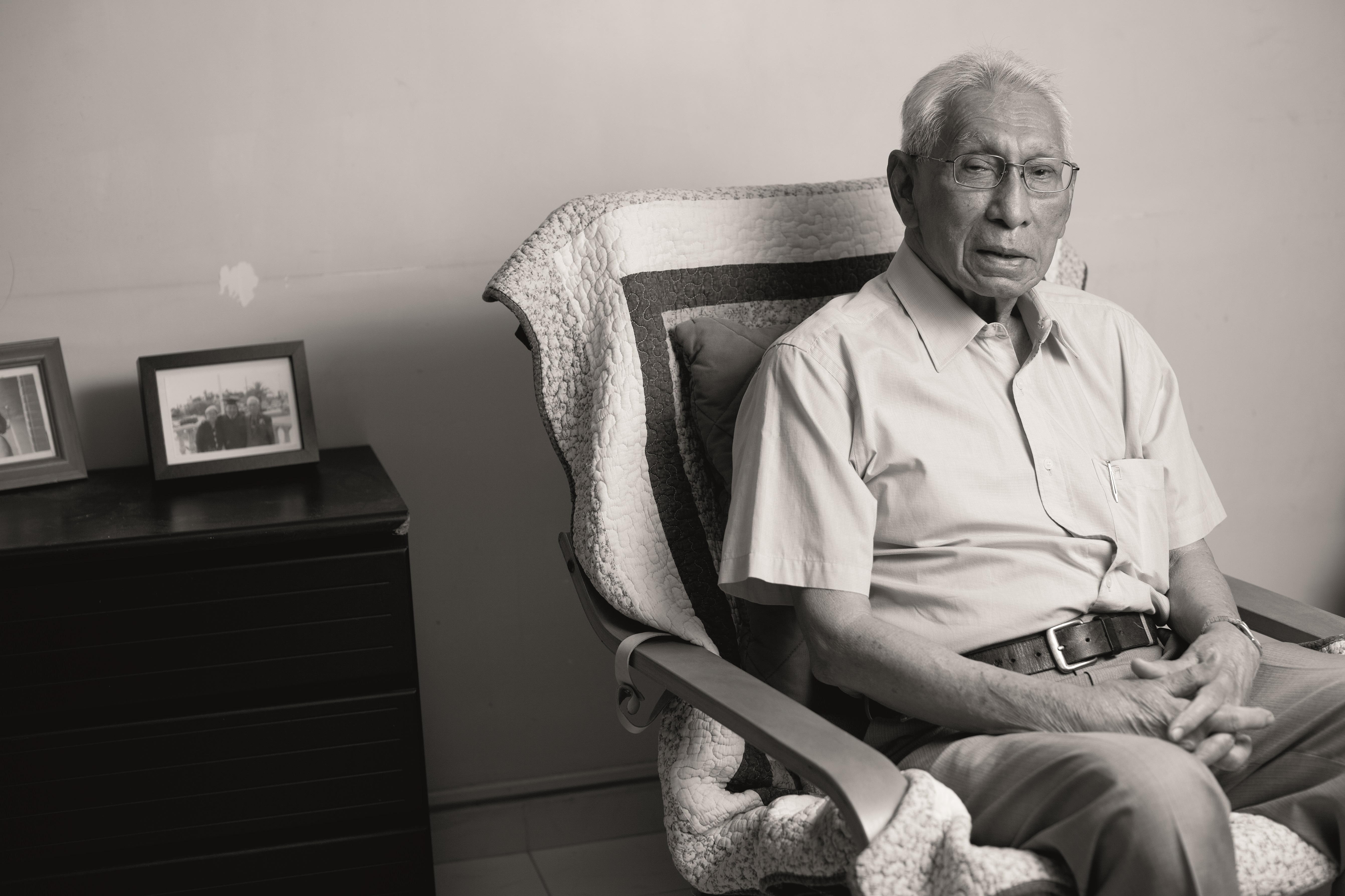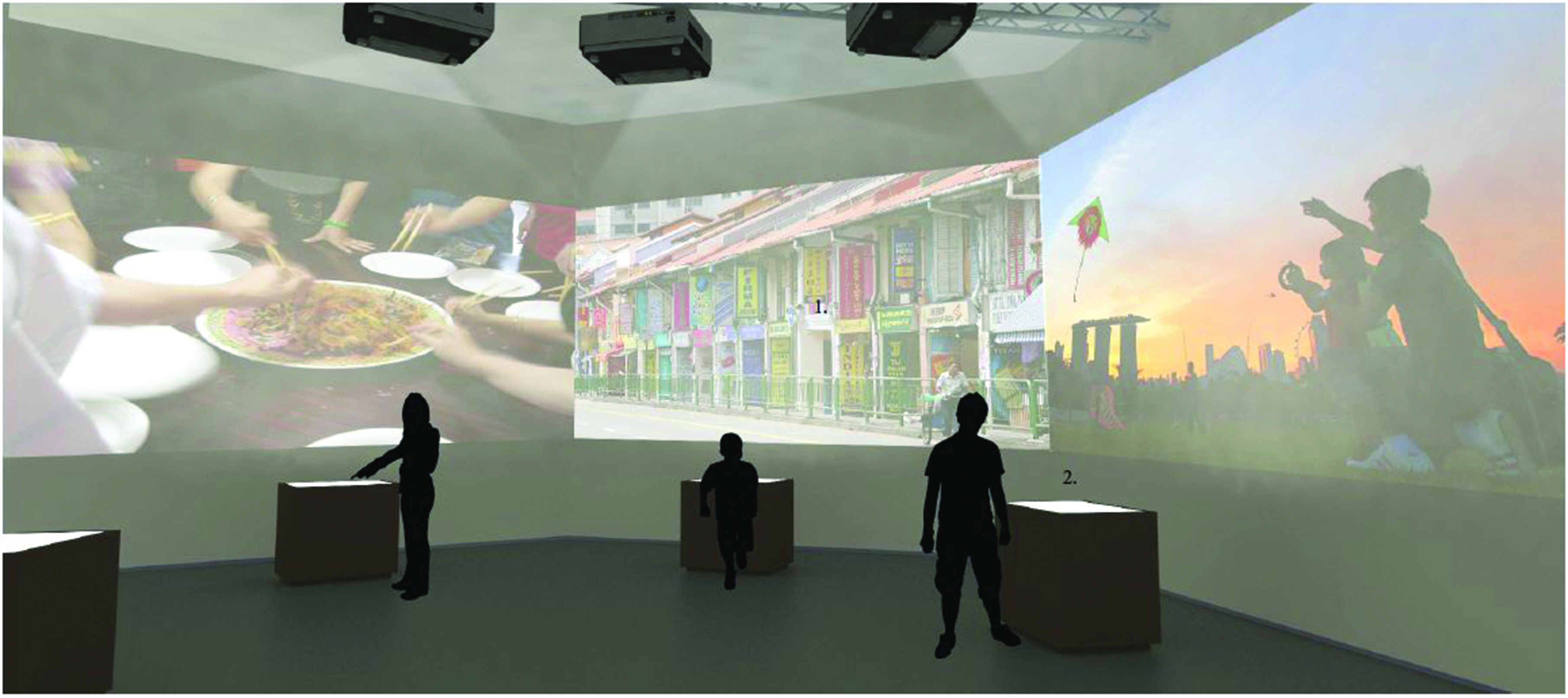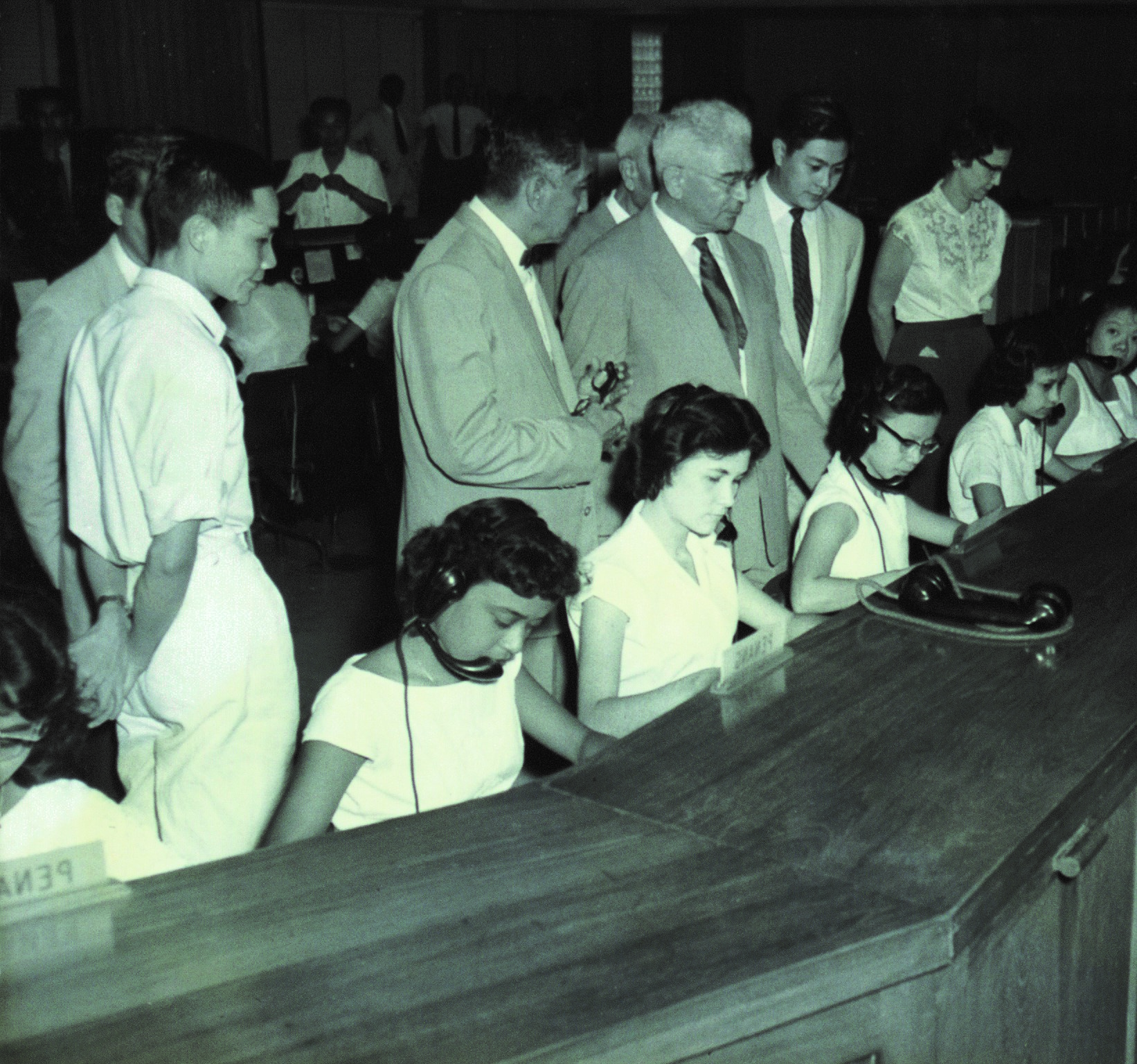Memories in Our Hands: The Singapore Memory Project Exhibition
Memories and history are viewed differently. Find out how the Singapore Memory Project captures such memories and provide us with another way of looking at Singapore aside from linear historicity.
 Mr Roland Vivian Simon, born in 1932, was a telephone operator at Sembawang Naval Base during the Japanese Occupation. His story is one of many featured in "Hands".
Mr Roland Vivian Simon, born in 1932, was a telephone operator at Sembawang Naval Base during the Japanese Occupation. His story is one of many featured in "Hands". Without our memories, we would not be able to perform the simplest everyday task, create meaning in our lives, or construct our sense of identity – our identities are anchored to what we choose to remember of ourselves. While memories are personal and internal, derived from an individual’s experiences in life, our memories are also cultural, drawing from and shaped by our social and cultural circumstances.1 Just like an individual, a group without memories would not know how to distinguish itself from others, nor understand what it stands for, or its values.
Memories are often viewed differently from history. History, being the purview of academics, is thought of as guided by reason, and therefore objective. Historians rely mainly on information from documents and objects, allowing history to be verified. In contrast, memories are personal and considered as an authentic voice – since the person who remembers experienced an event first-hand. Memories are associated with emotions, subject to revision, and forgetting is often part of the process of memory formation. The distinction between history and memory is, however, not so clear. Historians, after all, rely on materials or sources that are often memories of others. How history has been conceived or written is also shaped by the historian’s perspectives, which are in turn formed by their memories. What both memory and history have in common is that they are both representations of the past interpreted through the filter of the present.
The growing interest around the world in memories, whether in the form of family histories, autobiographies or memorials, has been for some scholars the result of what is termed the “memory-crisis”2 – “a crisis involving, on the one hand, enormous attention to memory, and on the other, disjuncture between contemporary life and the remembered past”.3 The anxieties of a fast-changing world make us “speak so much of memory because there is so little of it left”.4
Where are memories kept? Memory by its nature is “mortal, linked to the brain and the body that bears it”.5 There are, however, memory warehouses in the form of libraries, archives and museums where memories are kept in material forms. The Singapore Memory Project (SMP) is one such warehouse. Launched in August 2011, it is a nationwide initiative spearheaded by the National Library to capture the memories of Singapore – whether individual, organisational or collective. Memories are authentic voices enriching the telling of the past and providing another way of looking at Singapore aside from linear historicity.
 Artist's impression of the Remembering Room in “Hands”. Courtesy of FARM.
Artist's impression of the Remembering Room in “Hands”. Courtesy of FARM.This year, aside from collecting, preserving and presenting memories on its digital platform, the SMP team is working on a physical exhibition called “Hands”. Unlike historical exhibitions that are often curated from the viewpoint of historians, memories will take centre stage in this exhibition.
Knowledge and remembering [are] in the hands and in the body.
— Paul Connerton[^6]
— Paul Connerton[^6]
You’ve Got Mail! Singapore’s First Postmaster General
 (Left) Mr Bala Supramaniam, Singapore’s first Postmaster General, with his wife during the interview. (Right) Mr Supramaniam's hands.
(Left) Mr Bala Supramaniam, Singapore’s first Postmaster General, with his wife during the interview. (Right) Mr Supramaniam's hands.“I started in 1936 when I joined the post office. At that time, Singapore was under the Postmaster General based at the headquarters in Kuala Lumpur. During the Japanese Occupation, there was no foreign mail service, only internal mail service or to Malaysia. The mail to Malaysia was censored. We had nothing to do with the censorship. The censorship was carried out by the Japanese officers. The savings bank service was continued and we continued to withdraw money from the post office savings bank but we were paid in Japanese Yen.
“When we became separated [from Malaya], we had new problems. The new problems for instance, the Housing Boards [flats] were coming up and a lot of correspondence was delivered. And postmen found it very difficult to go and deliver.”
“So there was talk about having boxes in the flats and for that we had a lot of problems. The National Development Board was rather reluctant to establish post office boxes, because they occupied space that could make them money.”
“A new legislation was introduced that every household must have a postbox so that we postmen can deliver, and all the offices, the big buildings must have boxes for us postmen to deliver.”
“And then we had difficulties because the rural area; there was a lot of development and the postman on bicycles could not go, so we introduced motorcycles to deliver the mail. But earlier on, there were problems of postmen delivery. They used to be chased by dogs. “The postman had a wonderful job. The motto was ‘The mail must go on – rain or shine’”.
— Excerpts from an interview with Singapore’s first local Postmaster General, Mr Bala Supramaniam, aged 95.
“Hands: Gift of a Generation” Exhibition
Memories are stored in our brains and are made visible through recollection and representation6 in the form of language. However, memories are also embodied and expressed through our body and bodily practices.7 The SMP’s focus for 2013 is the lives and memories of the people who lived through the country’s nation-building years.
To symbolise the lives of first-generation Singaporeans and their life’s work, the exhibition will be built around the imagery of hands. Our hands are not only tools we use to shape the world around us, but also the means through which we interact with the environment and one another. They allow us not only to touch the world in which we live, but also allow us to be shaped and nurtured by others.
In keeping with SMP’s participatory nature, “Hands” has been conceptualised as part of its ongoing engagement process. Through various programmes (via schools and the community), the public is encouraged to source, document and share memories. These include working with students or with SMP’s volunteer group, the Memory Corps, who conduct interviews with people who have interesting stories to share. All this contribute towards our exhibition content. These memories will either take the form of a physical text with an accompanying photograph of the contributor’s hands, or virtually on a digital wall of memories. Visitors will be able to interact with the digital wall and are encouraged to share their own memories.
This exhibition could have used objects to help elicit and trigger memories. We often think of objects in tangible forms, for example, a typewriter. However, in “Hands”, we have chosen to privilege the intangible – in the form of sounds. These intangible objects will not be displayed like in a historical exhibition with the relevant contextual information. Instead, we hope that the featured sounds would impress something upon each visitor so that the visitor can in turn share their memories with others.
Individual personal memories are always shaped by collective contexts. As an individual, we carry memories that we might not have experienced directly, such as memories of others learnt through family stories or school. The exhibition has been guided through this understanding of personal memories that are, on the one hand, personal and unique, and on the other, reflective of the interconnections between generations, cultures and the context of living in Singapore. “Hands” provides a platform for remembering and transmission, and is a site for interaction between the memories shared and the visitors who encounter them.
Memory is an act of “thinking of things in their absence” which may well be triggered in response to objects.
— Susan A. Crane[^9]
— Susan A. Crane[^9]
Visit “Hands: Gift of a Generation” at the Plaza, National Library Building from 7 August 2013 to 13 October 2013.
Hello, Operator? Story of a Telephonist
 Yang di-Pertuan Negara (Head of State) Yusof Ishak observing operators at work when he visited the Singapore Telephone Board, 1961. Yusof Ishak collection, courtesy of National Archives of Singapore.
Yang di-Pertuan Negara (Head of State) Yusof Ishak observing operators at work when he visited the Singapore Telephone Board, 1961. Yusof Ishak collection, courtesy of National Archives of Singapore.I applied for the job but it took some time for the reply to come to go for the interview. So straight after school, I [worked] as a sales girl in Robinsons. After a few months, they called me, I went for an interview. It was not an interview per se; I went into a room with a phone and I was supposed to speak to somebody on the phone. They were recording it, they sort of wanted to gauge your voice. Then they called you back for a second interview where you met people. I was one of the few non-Eurasians at the Singapore Telephone Board; it was strictly for Eurasians.
As a telephonist, we answered the calls for [phone numbers] 100, 103. It was plug and call, there were no switches, nothing. The calls would come up glowing in a row and we would plug it in, take that call and dial the number for them. They needed assistance in dialing up so we assisted them. Then there were the public phones, where they called in to the operator for us to assist them and they dropped in the coins and we needed to count. People called 103 for assistance to get phone numbers. Some of the callers [did] not even know the proper name [of the party they wanted to call]. We were pretty good with numbers, now I am lousy with numbers because all of it is programmed in the phone.
I switched from an operator to a supervisor. It was not an easy time for there was a lot of “she is the only Chinese” talk, because all the supervisors were Eurasian at that time. But by [the] time when I was made supervisor, other races were slowly coming in. After that, [I conducted] telephone courtesy and technique training, where people were sent in from all walks of life, including government officers, to learn from us. Then my VP [vice-president] decided to put me into marketing.
[During the 1964 racial riots] there [were] so many calls coming in, people were so worried. When there is such an emergency and too many calls [flood] in, calls get blocked. People call and call, can’t get through, so they try and get the operator. So we were really flooded. We stayed there [for] 24 hours… We were brought to work in a bus. You know you were safe because you had security [everywhere], but what about your [family], what about your neighbours, inlaws… [my] own family was scattered… It was a really stressful time….
Our kampong people looked after our kampong people. It was only the outside kampong people that made mischief. The Malays and Chinese in [our] kampong were looking after each other. The people from other kampongs [snuck] in and hit people… But it was not neighbour against neighbour. In Telecoms, you had people from all sorts of life and so all these stories were told. Our cleaner was hacked.”
— Excerpts of an interview with Mdm Lucy Teo, aged 70, who worked as a telephonist at the Singapore Telephone Board. Mdm Teo was with the organisation for 34 years.
REFERENCES
Climo, J., & Cattell, M. (2002). Introduction: Meaning in social memory and history. In J. Climo & M. Cattell (Eds.), Social memory and history: Anthropological perspectives (pp. 1–38). USA: AltaMira Press. (Call no.: R 153.1 SOC)
Crane, S. (Ed.). (2000). Museums and memory (pp. 1–16). California: Stanford University Press. (Not available in NLB holdings)
Hall, S. (2012). Theatres of memory: Past and present in contemporary culture (pp. 3–50). London: Verso. (Not available in NLB holdings)
Hodgkin, K., & Radstone, S. (Eds.). (2003). Contested pasts: The politics of memory (pp. 1–22). London: Routledge. (Call no.: R 153.12 CON)
NOTES
-
Hodgkin & Radstone, 2003. ↩
-
A term that originated from Richard Terdiman in his publication Present Past: Modernity and the Memory Crisis. See Cateel & Climo, 2002. ↩
-
Cateel & Climo, 2002, p. 6. ↩
-
Nora, quoted in Cateel & Climo, 2002, p. 6. ↩
-
Crane, 2002, p. 1. ↩
-
Crane, 2002. ↩
-
Cateel & Climo, 2002. ↩

